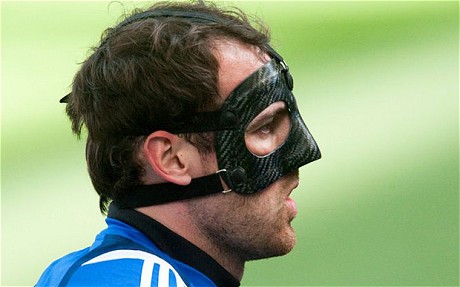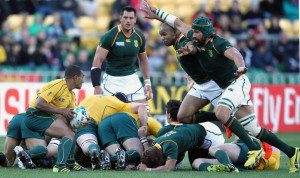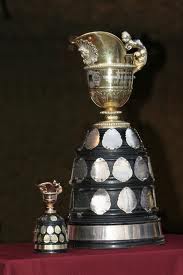
For the next few months, The Inside Man will focus on the lessons learned after moving to South Africa to do a Sports Diploma at a prestigious Rugby University. However, all names and locations have been altered for legal reasons. The Inside Man will be commenting on coaching styles, difference in playing styles and specific issues within the team and season, as he dissects the incredibly professional and intense structure of South African rugby, picking apart the wider issues within.
 KRUGER NATIONAL PARK, SOUTH AFRICA:
KRUGER NATIONAL PARK, SOUTH AFRICA:
Part One: TMI (Too Much Information!!!!)
It’s the end of week one and what a week! A squad of 50, all of whose names must be learnt ASAP! Two notebooks have been acquired. One for scribbling in drills during practice, the other for neatly writing everything up during the evening. A nickname of sorts has already been acquired, ‘English’ is used to indicate people are talking to me. One of the second rowers, an avid cricket fan, has taken to calling me ‘Jimmy Anderson’ (a world class fast swing bowler in England’s cricket team). As he puts it ‘he swings both ways’, whilst I would love to argue his justification, he is 6’4, with deceptive pace–who am I to disagree?
There’s a degree of familiarity now and in many cases friendship that was sorely lacking in the first two days. Several conversations about rugby seems to have reassured people that I may have some idea what I am talking about.
The coaches are a mixture of ex-provincial players with one or two who have coached at an even higher level. To say I am fortunate to have landed in this place is an understatement of gross proportions. As the Director of Rugby put it, ‘he has learnt more in three days than he ever would have back in England’. Whilst this is true, that is not to say that any of the stuff is revolutionary, the fundamentals of rugby stay the same but the level of complexity is higher. There can be no doubt that the differences in the style of training, intensity and attention to detail are vast compared to anything I have witnessed. This is as close to a professional side as University students are allowed to be.
 The first training session? No fitness, no light non-contact work, no gentle run-throughs. Full blooded smash and grab rugby. If you were a new boy, you picked up the moves as you went. This specific side has maintained a lot of their players from last season, so there are very few excuses for people who don’t know what they are doing. There there is an expectancy of physicality. That is not to say that this is simply a case of contact for the sake of contact, it is more a case of the word ‘uncontested’ being removed from the dictionary. If you want to play like you play in a game, then you have opposition who hit hard. You train as you play. One particular moment stands out, one of the lead hookers having been told to go into the defensive team, took on a rather scary resemblance to a missile. He flew out of the line to cut the starting Number 8 in half. 30 seconds later he did the same to the starting tighthead. When I asked him if he could do that all game, every game, he shrugged and said he needed to work on his fitness but ‘pretty much’. Welcome to SA.
The first training session? No fitness, no light non-contact work, no gentle run-throughs. Full blooded smash and grab rugby. If you were a new boy, you picked up the moves as you went. This specific side has maintained a lot of their players from last season, so there are very few excuses for people who don’t know what they are doing. There there is an expectancy of physicality. That is not to say that this is simply a case of contact for the sake of contact, it is more a case of the word ‘uncontested’ being removed from the dictionary. If you want to play like you play in a game, then you have opposition who hit hard. You train as you play. One particular moment stands out, one of the lead hookers having been told to go into the defensive team, took on a rather scary resemblance to a missile. He flew out of the line to cut the starting Number 8 in half. 30 seconds later he did the same to the starting tighthead. When I asked him if he could do that all game, every game, he shrugged and said he needed to work on his fitness but ‘pretty much’. Welcome to SA.
Some will argue that this abrasive focus on full contact can lead to injuries. This is true, however for a side that has 8 hookers and five scrum-halves. This is not of huge concern. The message is clear, there is always someone to take your place! There are ten pages of lineout calls.If the hookers and second rowers don’t know them, then the coaches will find someone who does. Whilst the focus is more on the actual set up of the lineout than specific lineout moves, there is no doubt that this high level of technicality is yet another indicator of the much higher degree of detail within South African rugby as a whole, all the way down to high school.
 The players themselves are a mixture of former Super 15 Academy players, provincial age group representative players (Currie Cup) and one or two who have played for their full provincial side (all aged between 19-23 years old). This is active American College Football style recruiting. When I asked one of the players what he looked for at the University, he said that he found it hard to separate the education from the rugby team. This caliber of player means that there has already been serious exposure to high level coaching. When I was asked by one of the coaches if I felt patronizing giving some advice to one of the locks, I replied that even the best needed to be reminded of the small things they may have forgotten, and that is the truth of it. But make no mistake, this is a case of tweaking players to fit a game plan– not training rugby players from scratch.
The players themselves are a mixture of former Super 15 Academy players, provincial age group representative players (Currie Cup) and one or two who have played for their full provincial side (all aged between 19-23 years old). This is active American College Football style recruiting. When I asked one of the players what he looked for at the University, he said that he found it hard to separate the education from the rugby team. This caliber of player means that there has already been serious exposure to high level coaching. When I was asked by one of the coaches if I felt patronizing giving some advice to one of the locks, I replied that even the best needed to be reminded of the small things they may have forgotten, and that is the truth of it. But make no mistake, this is a case of tweaking players to fit a game plan– not training rugby players from scratch.
The competition they play in? The Varsity Cup or Shield. The Cup is the top tier of South African University Rugby, the Shield the second tier. Games are televised and all teams are sponsored! This aids the identification of talent that by Super 15 scouts. The fact that the second tier competition of University Rugby in South Africa is televised speaks volumes not only for the passion of the sport but stands alone as a clear indicator of the quality of rugby on show, why would you televise bad rugby?
As for me, well the information may be getting more manageable but I suspect that the awe may take a while to wear off. I may only be a lowly coaching assistant, but there are fewer better starts for a rugby education. Catch you all next week.
That’s it for now… feel free to comment below, look for and “Like” our Facebook Rugby Wrap Up Page and follow us on Twitter @: RugbyWrapUp, Junoir Blaber, DJ Eberle, Nick Hall, James Harrington, Cody Kuxmann, Jaime Loyd and Declan Yeats, respectively.

